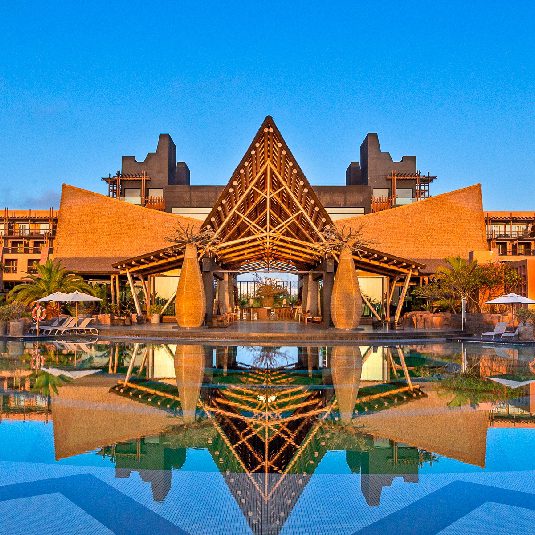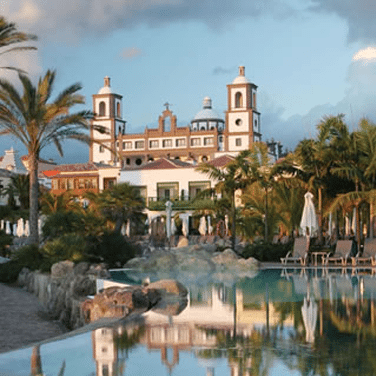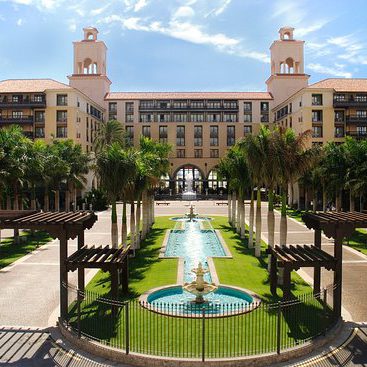Travel Information
How to get there
Venue & Hotels
Canary Islands
How to get there
How to get there?
No matter where you come from. Gran Canaria is waiting for you.
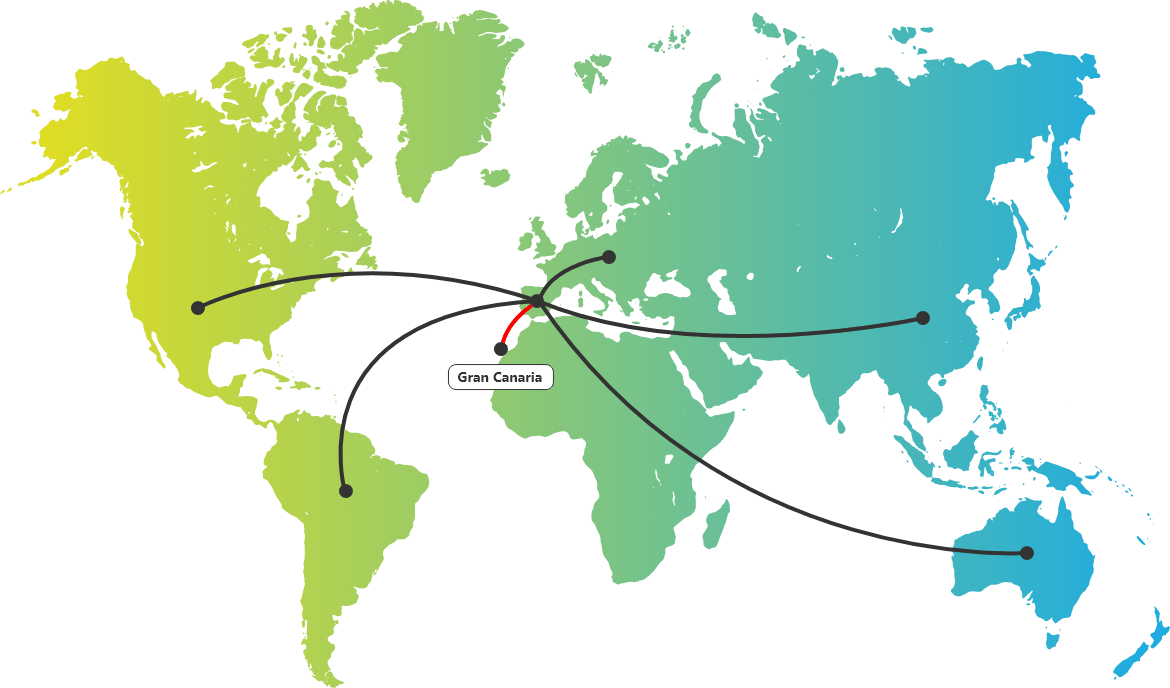
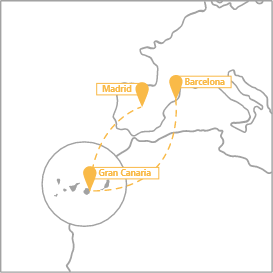
More than 10 daily flights from Madrid
and 5 daily flights from Barcelona.
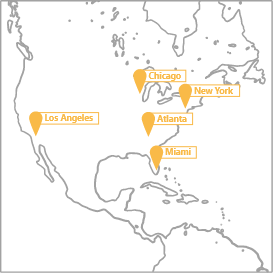
Principal routes from US Cities to Gran
Canaria would be from Miami, Atlanta,
NY, Los Angeles and Chicago via
Madrid, Barcelona, Lisbon, London,
Stockholm or Oslo.
More than 110 European
cities directly connected.

Travel from US
If you wish to extend your stay in Gran Canaria before or after the MPS18 General Meeting, we recommend to get in touch with the following travel agencies:
Viajes Insular
www.viajesinsular.net
B the travel brand
www.bthetravelbrand.com
Venue & Hotels
The 2018 MPS General Meeting will take place at Expomeloneras and Lopesan Hotels in Meloneras, Gran Canaria
The Organizing Committee welcomes all members and guests to the 2018 General Meeting of the Mont Pelerin Society, to be held on Gran Canaria in the dazzling Canary Islands.
The Canary Islands, also known as the Canaries, has it all. With a cosmopolitan city like Las Palmas on Gran Canaria, magnificent beaches, the amazing dunes of Maspalomas, and the majestic Mount Teide volcano on Tenerife, it never fails to impress.
There is more! Tucked away at heart of the Canary Islands is the gripping story of an entrepreneur named Christopher Columbus, who set sail from this small floating piece of Earth and catapulted the exchange of ideas and goods.
The lodging we have chosen for the event includes Gran Canaria’s three finest hotels, each with a different style and atmosphere. All are part of the Expomeloneras convention complex and just a five- to ten-minute walk from our event venue, located at the edge of the fun and vibrant Meloneras district.
ExpoMeloneras
Conference Center and Lopesan Hotel Complex
Gran Canaria
The area of Maspalomas/Meloneras, with 17 km of wonderful coastline, sandy beaches and an excellent year-round climate, is a paradise for beach lovers. It is separated from Playa del Inglés by a spectacular stretch of 400 hectares of dunes designated as a nature reserve. At the western end of this nature reserve you will find El Oasis, a sweet and salt water lagoon bordered with palm trees and hosting many species of migratory birds from Europe stopping here on their route to Africa. Close to El Oasis is Faro de Maspalomas, a lighthouse built in 1886, situated on the seafront promenade where you can have a delightful walk both during daytime as well as at night. At the promenade you will find not only beautiful coastal scenery, but also a variety of nice shops, restaurants and bars. There are two golf courses in the area as well as a wide range of nautical sports options including sailing, scuba diving, windsurfing or water skiing.
Venue. 2018 MPS General Meeting will take place in the heart of the Meloneras district. Located along the oceanfront, ExpoMeloneras and the three Lopesan hotels form Gran Canaria’s premiere exposition center and luxury hotel complex.
Hotels. The three Lopesan hotels are very different in look and personality, ranging from large and lively (Costa Meloneras), to exotic and romantic (Baobab), to quiet and exclusive (Villa del Conde). All Lopesan hotels have an array of shops, bars, restaurants, and activities (including gyms, salons, and swimming pools) that go with their style.
Getting to and from. The walk from any of the three hotels to the conference center is five to ten minutes. A shuttle will run between the hotels and the convention center for those who prefer to ride.
Services. All of the hotels can arrange for “off campus” activities such as sailing, golf, scuba diving, windsurfing, and water-skiing. Babysitting services can be arranged with the concierge.
Gym. At each hotel, guests have free access to a gym with basic equipment. A larger and more fancy gym—with advanced equipment and private instructors for hire—is located across from Baobab hotel. Entrance fee is 10 euro per person.
Internet. Free access for guests in the rooms, as well as open access in public areas of the hotels and at the MPS meeting venue.
Lopesan Baobab Resort
Vibrant African-style resort, a short walk to the MPS venue.
The exotic five-star Baobab is a destination in itself. At its heart is a majestic African lodge filled with shops, cafes, bars, and restaurants, including one of the few places in the Canary Islands serving African cuisine.
You don’t have to leave the Baobab to find lots to explore and do: large tropical gardens, swimming pools, ponds, waterfalls, and plenty of leisure and entertainment programs.
Five bars provide a variety of social gathering points. You can sip your favorite drink - prepared by one of the world’s best cocktail mixers! - inside the lodge, outside at the Mungo Park pool bar or the Henry Stanley in the cool, romantic grotto behind the waterfall.
Reference points: A short walk brings you to the beach and sand dunes of the Dunes of Maspalomas Nature Reserve. ExpoMeloneras—venue for the MPS meeting—is a five- to ten-minute walk.
The Lopesan Group is offering a 15% discount to MPS participants. To activate this discount, use MPS2018 as your “Promotion Code” when booking through the Lopesan website.
Lopesan Villa del Conde Resort
Standing high along the ocean, a serene Canary Island-style resort just a short walk to the MPS venue.
The luxurious five-star Villa del Conde immerses you in the charm of Canary Island life. Facing the sea, the hotel uses island architecture built around a traditional Canarian town layout.
A central square forms the heart of the complex surrounded by stately homes with wooden balconies and lush gardens. The spectacular reception area is housed in an authentic adaptation of one of the oldest churches on the island of Gran Canaria, with its two hallmark towers, central dome, and bell tower.
Bars and restaurants are interspersed, indoors and outside, around the emblematic hotel village and its pool. They offer a variety of live music and shows, specialty coffees, cakes, ice cream, and teatime meals.
The magnificent Thalasso Corallium, a luxurious beauty and wellness center, is located at the edge of the sea where relaxation and beauty treatments are enhanced by airy interiors, exquisite decoration, and seawater pools.
Reference points: You are just a few minutes’ walk to the beach, the lighthouse, and the dunes of Maspalomas Nature Reserve. ExpoMeloneras—the venue for the MPS meeting—is a five-minute walk from the lobby.
The Lopesan Group is offering a 15% discount to MPS participants. To activate this discount, use MPS2018 as your “Promotion Code” when booking through the Lopesan website.
Lopesan Costa Meloneras
Lively tropical beach-front hotel, great value, and just a bit farther walk to the MPS venue.
The four-star Costa Meloneras is a palatial ocean side hotel, spa and casino designed for fun, sport, and pampering. Built in the traditional colonial style of the island, it is wrapped in an eighteen-acre lush tropical garden (76,000 square meters) filled with some one hundred species and subspecies of palms.
An extensive indoor spa area offers all sorts of options for relaxation and upkeep. The garden doubles as an outdoor spa for all ages, with its impressive infinity pool, two hot tubs, children's pool, artificial beach, and terraces where you can hang out in hammocks under the shade of umbrellas.
And when lounging around gets too much, you have plenty of choices to reboot (for a fee): tennis, miniature golf, paddle tennis, shuffleboard, pétanque, a putting green, and a large gym with its state-of-the-art body building equipment.
For socializing and evening entertainment, you can choose from a variety of bars (indoors or at the pool) and restaurants with live music, open-air shows, and ocean views. And there’s always the casino!
Reference points: To the front is the public beach and a ten-minute walk from the lobby brings you to ExpoMeloneras—venue for the MPS meeting.
The Lopesan Group is offering a 15% discount to MPS participants. To activate this discount, use MPS2018 as your “Promotion Code” when booking through the Lopesan website.
Canary Islands
Canary Islands
Just off the coast of Morocco, 775 miles (1,250 km) southwest of Europe, the Canary Islands are located on the outermost border of Spain.
Because of its unique geographic position, the history of Gran Canaria and the Canary Islands is interwoven with the history of Africa, Europe and the Americas.
The Canary Islands were conquered by the Kingdom of Castile in 1495 after almost a century fierce resistance by the natives, believed to be descendants of Berber tribes who colonized the islands around 500 B.C.
After Christopher Columbus launched his first voyage from the Canary Islands, Gran Canaria became the port-of-call for Spanish ships to refit and board provisions before sailing to the Americas. Crops brought back from the “New World” were first grown in the Canary Islands before their introduction to Europe. For example, products such as sugar cane drove the island’s economy for many years.
Canary Islanders actively participated in the settlement and development of the Spanish Americas, especially the Antilles and Venezuela. Eventually, they emigrated further north and settled in what is currently known as the state of Louisiana (USA) during the 18th century.
Today, the Canary Islands continue to drive economic activity in tourism. The archipelago, with seven main islands (and many more little ones), is one of Europe’s top vacation destinations as well as attracting tourists from around the world.
If you have some time off to spend visiting the Canary Islands, let us introduce you to the different islands and their personalities.
You can hop between islands via ferry or plane from Gran Canaria.

Gran Canaria, “a miniature continent”
Gran Canaria offers more scenic diversity than any of the other Canary Islands: from the dramatic sand dunes of Maspalomas with its desert vegetation to the epic interior landscape where you will find splendorous palm groves in the ravines and pine forests on the mountains.
Gran Canaria has plenty of marvelous beaches reaching from the wide Saharan splendour of Maspalomas to the tiny patch of sand of Sardina del Norte or even the pebbly, charming beaches of Puerto de las Nieves. Most of the island beaches are easy to access, however some of them are only accessible from the sea or down spectacular ravines.
In the interior you will find magnificent landscapes and picturesque inland villages. From Gran Canaria you probably have the best views of Tenerife's mega volcano, Teide. You can enjoy spectacular sunsets from Puerto de las Nieves with views to the cliffy western coast and Tenerife.
Thanks to its mild climatic conditions it is possible to practice outdoor sports all through the year, not only nautical, but also mountain sports. Gran Canaria is a great hiking destination with a network of well-marked trails, some of which are also excellent for biking.
You can also do great shopping on the island, finding prestigious brand boutiques as well as small craft shops in open air shopping areas and local markets.
Its capital, Las Palmas de Gran Canaria, is the most cosmopolitan and vibrant city of the Canary Islands with its buzzing nightlife and the gorgeous Las Canteras beach. You will discover the island’s rich historical past and culture not only in the museums, but also in the architecture with its distinct colonial flavour in towns and villages.
The toing and froing of ingredients in this cosmopolitan port island explains the diversity of the cuisine on the different municipalities, ranging from the superb Queso de Flor cheese, to sweet potatos, mojo sauce, bienmesabe, wines, Tropical lager, sugar cane rum and coffee. Gran Canaria also produces a gourmet range of products including tomatoes, apples, olives, tropical fruits, sweet bananas and a huge assortment of fresh fish to be found around its local markets and restaurants.
This guide may be helpful to discover the island. Also here you can find more information about what to do and see in Gran Canaria.

Lanzarote, "the volcano island"
Lanzarote’s moonscape appearance is a unique landscape of extraordinary beauty pockmarked by volcanic cones. There are large areas covered with lava fields, palm groves, volcanic grottos and salt flats as well as beautiful sandy beaches and great conditions for diving. The visitor will enjoy the beautiful contrasts of the fresh green vineyards, the black volcanic soil and the sea, as well as the palette of colours resulting from the sunlight’s play on the volcanoes.
Here you can find more information about what to do and see in Lanzarote.

Fuerteventura, the island for beach lovers
This is the oldest Canary Island and the nearest to the African coast. This results in a flat island of soft shapes and very dry landscapes with a near constant breeze that welcomes windsurfers and kiteboarders from all over the world.
Fuerteventura is a beautiful beach paradise of fine, golden sands and turquoise seas. Corralejo and its white sand dunes, 5km-long Sotavento beach and the wild and isolated Cofete beach are the best tips we can give. There are also a few historic villages like charming Betancuria to visit on the island.
Here you can find more information about what to do and see in Fuerteventura.

Tenerife, the island of diversity
Tenerife is the largest and most populated island of the Canary Islands. Outside of the tourist resorts and the popular theme parks, you will find a big variety of landscapes, reaching from small and picturesque coastal villages like Garachico, to exuberant forests and scenic mountain ranges like Macizo de Anaga. Its highlight however, is Teide, the highest elevation of Spain, a volcano that gives name to the National Park.
Here you can find more information about what to do and see in Tenerife.

La Gomera, the island for nature lovers and hikers
La Gomera is a small and abrupt island shaped by plunging ravines. It is topped by Garajonay National Park and largely covered by a fairy-tail looking laurisilva rainforest. Because of its orography there are many parts only to discover while hiking. At Gomera you will find glorious mountain scenery of immense valleys, tiny terraces, palm groves and rainforest.
Here you can find more information about what to do and see in La Gomera.

El Hierro, the mystical island for a total escape
El Hierro is the westernmost and smallest of the seven major Canary Islands. It was once the island at the edge of the world and it still keeps an almost magical spirit, partially because of being the least visited and most rural island.
The visitor will find fantastical twisted juniper trees, gorgeous pine forests, a small and beautiful red sand beach, petrified rivers of lava and a surprising hilly landscape characterized by dry stone walls and woolly sheep. It is known as a world-class diving destination, boasting a marine reserve home to a large variety of marine life.
Here you can find more information about what to do and see in El Hierro.

La Palma, “the beautiful island” for nature and astronomy lovers
La Palma has a genuine feel for local culture, including handcrafts, traditional architecture and 19th-century villages. It is also a place to truly appreciate nature’s wonders in its lovely, black sand beaches, natural rock pools, coastal walks, streams and waterfalls in the woodland, and the magnificence of Caldera de Taburiente National Park.
The island also offers some of the best stargazing opportunities on the planet. Guided tours of three international observatories at Roque de los Muchachos give a unique view of our universe.
Here you can find more information about what to do and see in La Palma.



